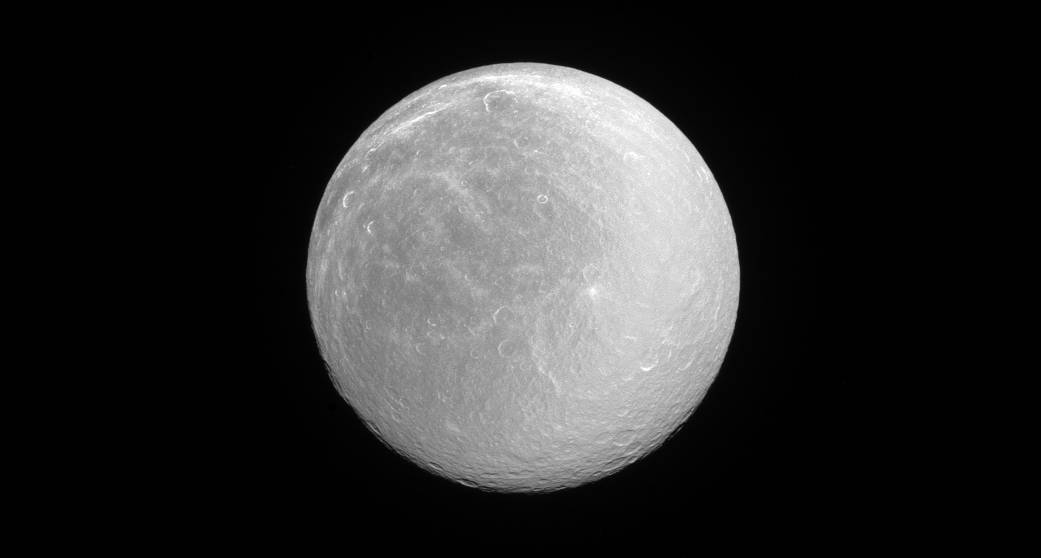Saturn's 'Dirty Snowball' Moon Cleans Up in Sparkling NASA Photo

The icy surface of Saturn's moon Rhea sparkles in this striking new photo from NASA's Cassini spacecraft.
Rhea is Saturn's second-largest moon (after Titan) and measures 949 miles (1,527 kilometers) across. The Cassini spacecraft captured this view of the moon on June 3, and NASA unveiled the image Monday (Aug. 1).
Rhea is composed almost entirely of ice, with traces of rock mixed in, causing it to resemble a dirty snowball. What's more, the battered moon has suffered numerous impacts, making it one of the most heavily cratered celestial bodies in the solar system. [Rhea: Photos of Saturn's 2nd Largest Moon]
"Rhea, like many moons in the outer solar system, appears dazzlingly bright in full sunlight, NASA officials wrote in an image description. "This is the signature of the water ice that forms most of the moon's surface."
The icy moon also has a very thin oxygen-rich atmosphere that is about 5 trillion times less dense than that found on Earth. Even still, Rhea is the only known celestial body outside of Earth to have an oxygen atmosphere.
Cassini was about 365,000 miles (587,000 kilometers) away from Rhea when it captured the new portrait. The view shows the "anti-Saturn hemisphere of Rhea," NASA officials wrote.
The Cassini spacecraft has been orbiting Saturn since 2004. However, the probe's mission is expected to end in September 2017.
Breaking space news, the latest updates on rocket launches, skywatching events and more!
Follow Samantha Mathewson @Sam_Ashley13. Follow us @Spacedotcom, Facebook and Google+. Original article on Space.com.

Samantha Mathewson joined Space.com as an intern in the summer of 2016. She received a B.A. in Journalism and Environmental Science at the University of New Haven, in Connecticut. Previously, her work has been published in Nature World News. When not writing or reading about science, Samantha enjoys traveling to new places and taking photos! You can follow her on Twitter @Sam_Ashley13.

